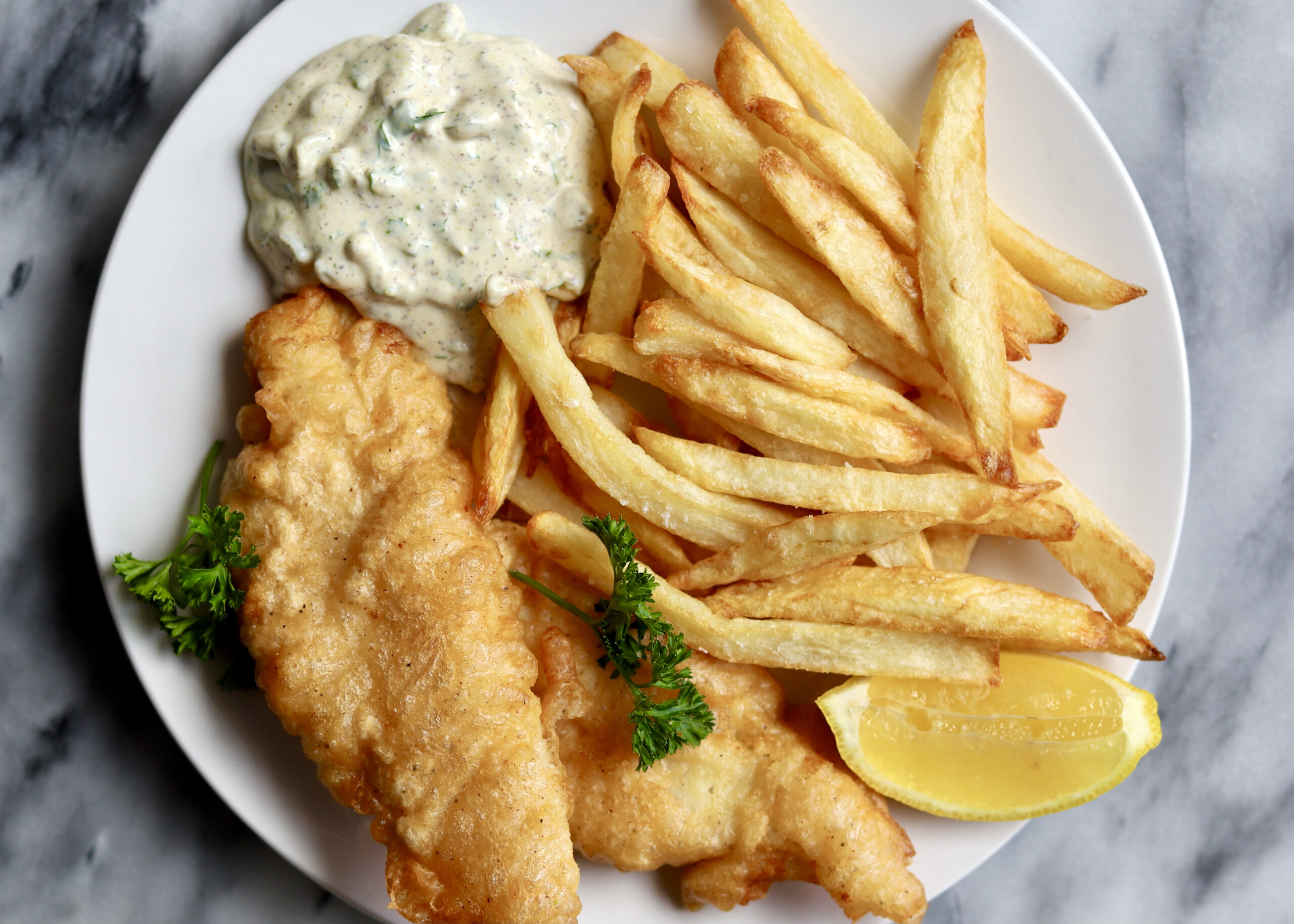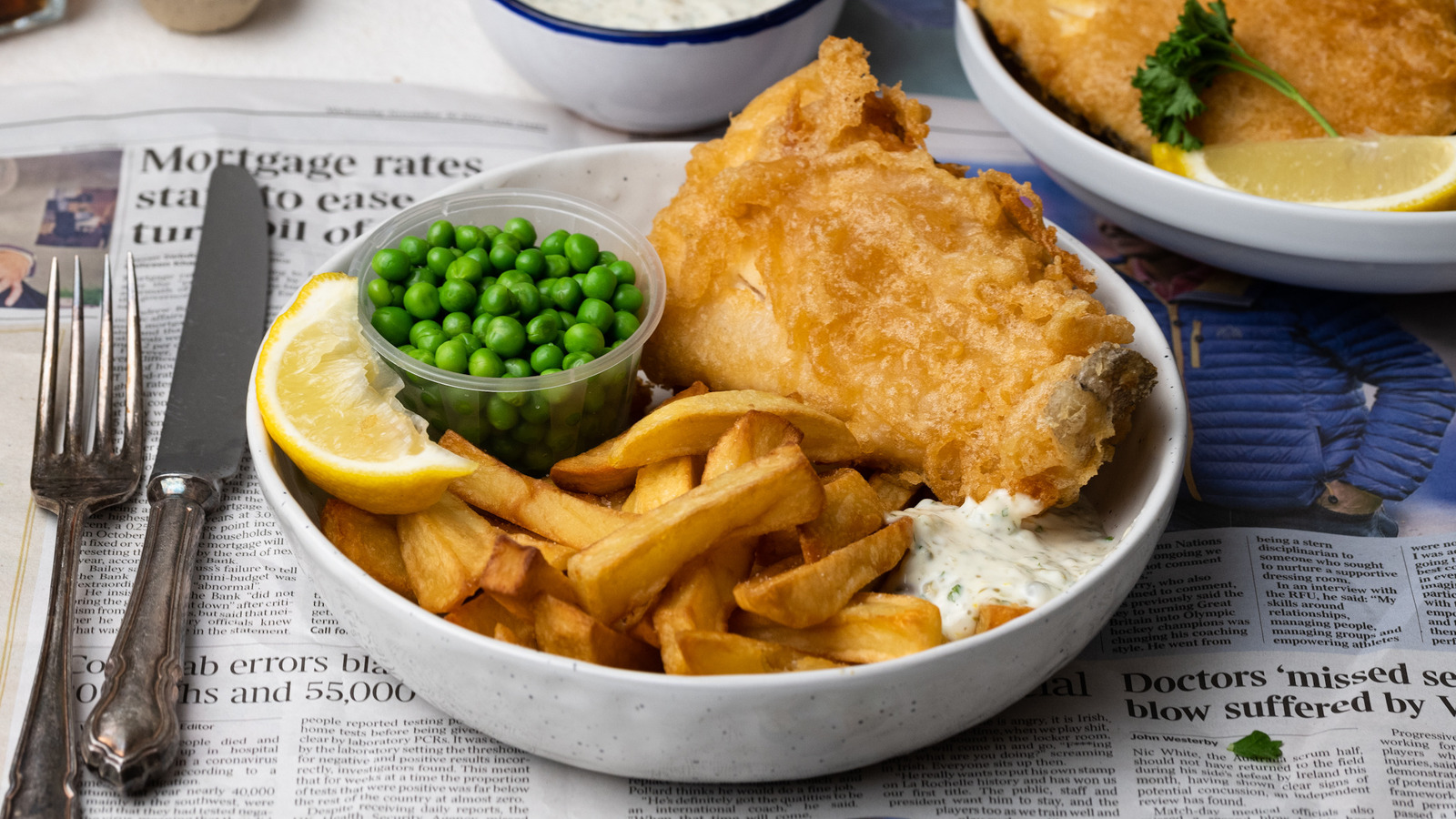
A Deep-Fried Legacy: The Unshakeable Allure of Fish and Chips
There are few culinary experiences as viscerally evocative as unwrapping a parcel of freshly fried fish and chips. The crinkle of the paper, the plume of steam carrying the sharp, tangy scent of malt vinegar, and the deep, comforting aroma of hot oil and potatoes create a sensory symphony that is deeply ingrained in the British psyche. It is a meal that transcends class, region, and occasion. It is seaside holidays and rainy Friday nights; a quick, fortifying lunch and a cherished family ritual. More than just sustenance, fish and chips is a cultural institution, a culinary icon forged in the crucible of the Industrial Revolution and seasoned with centuries of history.
To understand its enduring appeal, one must first journey back to its surprisingly international origins. The two core components of this quintessentially British dish arrived on UK shores via different immigrant communities. The practice of frying fish in a protective batter is credited to Sephardic Jewish refugees from Portugal and Spain, who settled in England as early as the 16th century. Their method of preparing pescado frito—fish, often coated in a thin layer of flour or matzo meal and fried—was designed to be eaten cold on the Sabbath, but its deliciousness when hot was not lost on their new neighbours. Charles Dickens himself references "fried fish warehouses" in his 1838 novel, Oliver Twist, attesting to its established presence in London long before it met its starchy soulmate.
That soulmate, the chip, has a more contested lineage, often claimed by both Belgium and France. Fried potatoes, or pommes frites, were a popular street food on the continent. The genius lay in marrying the two. The exact location of this culinary wedding is a matter of fierce, albeit friendly, historical debate. In the north of England, the industrial town of Mossley, near Oldham, stakes a claim for a chip shop opened by a certain John Lees around 1863. Simultaneously, in London’s East End, a young Jewish immigrant named Joseph Malin is said to have opened his shop in 1860, combining the fried fish of his heritage with the chips that were becoming a popular staple. Regardless of who was officially first, the concept was an immediate and explosive success.
The timing was perfect. The late 19th century saw Britain in the full throes of the Industrial Revolution. A burgeoning urban working class needed cheap, high-energy, and readily available food. Fish and chips fit the bill perfectly. The expansion of the railway network meant that fresh fish from the North Sea ports like Grimsby and Hull could be transported quickly to the industrial heartlands. Trawling technology was advancing, making fish like cod and haddock abundant and affordable. Potatoes, a robust and inexpensive crop, were plentiful. The combination offered a hot, satisfying meal rich in protein and carbohydrates that could fuel a nation of factory workers and miners. The "chippy" became a cornerstone of working-class communities, a beacon of warmth and sustenance at the end of a long, arduous day.
Its cultural significance was cemented during the 20th century’s darkest hours. During both World Wars, fish and chips were one of the very few foods that were not subject to rationing. The government understood its importance not just as a source of nutrition, but as a crucial morale booster. Winston Churchill famously referred to fish and chips as "the good companions," recognizing their role in maintaining a sense of normalcy and comfort on the home front. For millions, a trip to the chippy was a small but vital act of defiance and a taste of the life they were fighting to protect.
But what is it, exactly, that makes a perfect portion of fish and chips? It is a dish of beautiful simplicity, but one where every element must be executed with precision.
First, the fish. The undisputed kings are cod and haddock. Cod offers large, chunky flakes and a mild, clean flavour. Haddock is slightly sweeter and has a finer flake, holding its shape well. Both are encased in a glorious, golden armour of batter. This is not merely a coating; it is a feat of culinary science. The ideal batter—often a simple mix of flour, water, and a raising agent like baking soda, or elevated with the inclusion of beer for its carbonation and flavour—hits the searingly hot oil (traditionally beef dripping, though vegetable oils are now more common) and instantly inflates. This process creates a protective, crispy shell that steams the fish within, locking in moisture and ensuring a perfectly cooked, flaky interior. A great batter is light, airy, and shatters under the fork, never heavy or greasy.
Then come the chips. These are not the slender, delicate French fries of bistro fame. A proper British chip is a chunky, substantial affair, cut thick from a floury potato variety like the revered Maris Piper. The magic lies in the double or even triple-frying method. A first fry at a lower temperature cooks the potato through, making it soft and fluffy on the inside. After a brief rest, it is plunged back into hotter oil for a second fry, which transforms the exterior into a golden, crisp, and utterly irresistible crust. The result is a textural masterpiece: a crisp bite yielding to a soft, pillowy interior that is perfect for soaking up salt and vinegar.
The experience is incomplete without the essential accompaniments and rituals. The liberal dousing of salt and, crucially, malt vinegar is non-negotiable. The sharp acidity of the vinegar is the perfect counterpoint to the richness of the fried food, cutting through the fat and cleansing the palate. Then there are the regional and personal preferences. In the north, a pot of thick, savoury gravy or a vibrant, almost neon-green curry sauce is a common companion. Everywhere, you will find the divisive but beloved mushy peas—marrowfat peas soaked and simmered into a sweet, starchy puree. For the purist, a pickled onion or a "wally" (a large gherkin) provides a sharp, vinegary crunch. For the truly indulgent, the "chip butty"—a generous helping of chips stuffed into a soft, buttered bread roll—is carb-on-carb perfection.
For generations, the traditional serving vessel was a sheet of newspaper, which served as both an insulator and an absorbent layer. While food safety regulations have largely replaced newsprint with plain paper and cardboard trays, the act of eating directly from the wrapper, often with a small wooden fork or simply one’s fingers, remains part of the charm. It is a meal best eaten outdoors: on a blustery seaside promenade, a park bench, or even just walking home, the warmth of the parcel seeping through the paper.
Today, the humble chippy faces challenges from a world of global takeaway options, from pizza to pad thai. The rising cost of fish and energy puts pressure on these often family-run small businesses. Yet, the allure of fish and chips remains unshakable. It is a taste of nostalgia, a direct link to a shared past. It is a dish without pretension, honest and democratic. It asks nothing of you but to enjoy its simple, profound deliciousness. In a world of fleeting food trends and complex gastronomy, the enduring legacy of fish and chips lies in its glorious, deep-fried simplicity—a perfect marriage of land and sea, history and home, wrapped in paper and served with a generous shake of soul.

A Deep-Fried Legacy: The Unshakeable Allure of Fish and Chips pictures collections gallery
A Deep-Fried Legacy: The Unshakeable Allure of Fish and Chips is a nice pictures and stock photo for your computer desktop or your smartphone device (ipad, tablet, blackberry, iphone, and other device) and also for your personal use. Free available for desktop wallpaper or additional image collections for your all needs. And was uploaded by at date July 1, 2025. You can download it in your computer by clicking download button to save image... have nice day and have fun guys..
This 1 image in featured post from 0 Photos/images Gallery and awesome picture selections about A Deep-Fried Legacy: The Unshakeable Allure of Fish and Chips is available to download. "Download & Save" images/pictures/wallpapers now and this Is one of the post that listed in packed to Category is Foods directory, with image dimension/resolution size is 2560 × 1828 px and size image/picture file is 672 KB with original link post ID is : https://powae.pw/a-deep-fried-legacy-the-unshakeable-allure-of-fish-and-chips/. Get download/save images in post and gallery, "download" images or "preview" it on a bigger image for spesification sample in Large size (full attachment size) here : [Download & View to Large size]. Just Simple way, in thumbnail or in Gallery. *Click images to view Large Size.We collect this wonderful image from online and choose one of the best for you. Pictures collection that posted here was carefully chosen and published by author after choosing the ones which are best among the others. So, ultimately we make it and here these list of best image for your inspiration and informational reason regarding the A Deep-Fried Legacy: The Unshakeable Allure of Fish and Chips as part of blogsite exclusive updates collection. So, take your time and find the best informations and pictures posted here that suitable with your needs and use it for your own collection and personal use. About Image information: Image has been submitted and You are able to give your opinion as evaluations to our web site value.
Don't forget to comment if you interest with this images, you can share this post to social media like as facebook, twitter, google+, pinterest, stumbleupon, and more. just click social media buttons for share this post A Deep-Fried Legacy: The Unshakeable Allure of Fish and Chips Now. :)
Thanks for your visit, I hope you happy come to opo wae, wis opo wae, and get what you're looking for. And hope sometimes you will come back again here. All you need to do is help us develop by discussing this A Deep-Fried Legacy: The Unshakeable Allure of Fish and Chips if you like it "leave your comment". have fun, Thank you.



